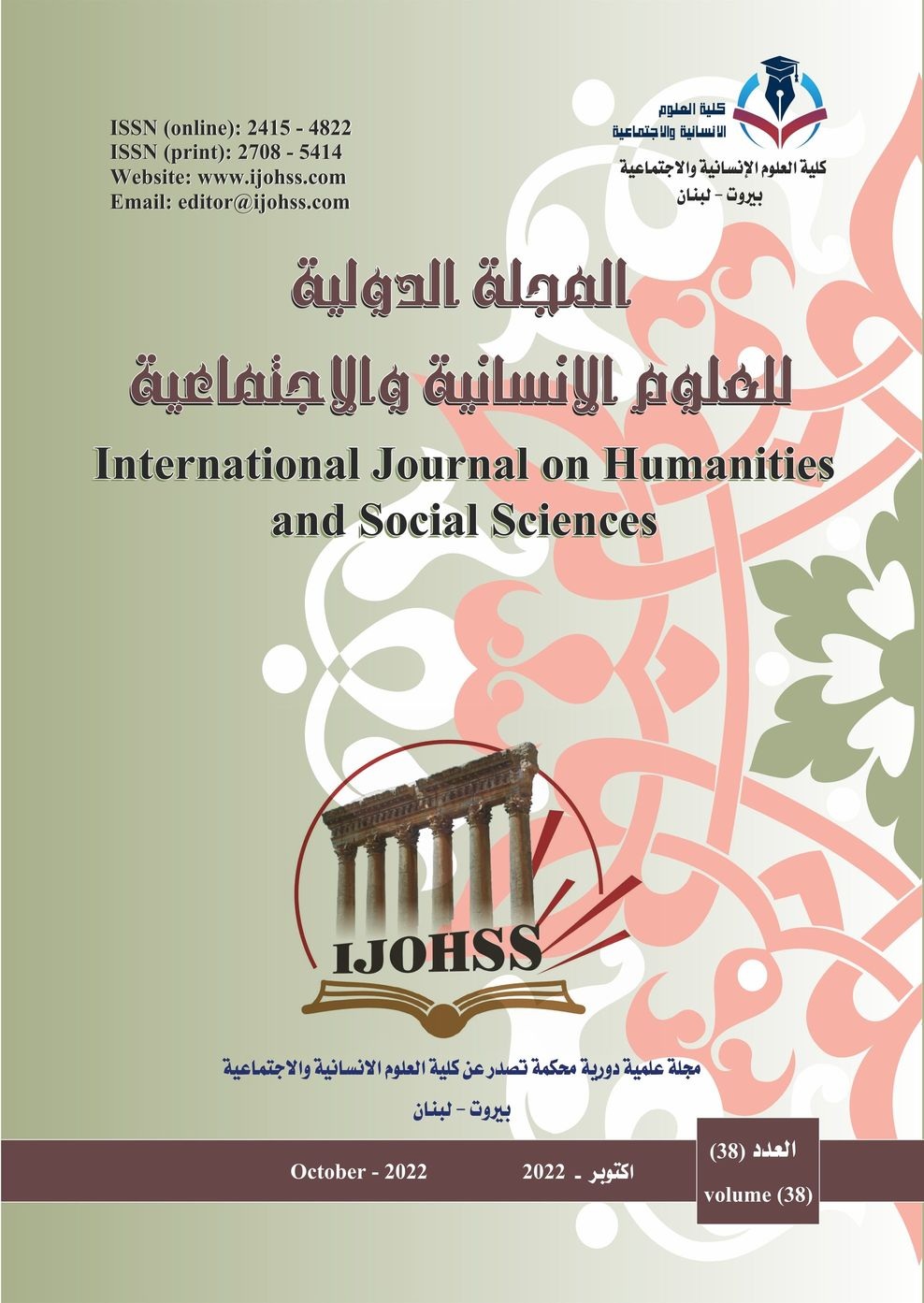Socio-Regional Variations in the Conversation of Al-Hussainyya Speech Community
الملخص
This research deals with language variations in Al.Hussaiyya conversation in the city of Kerbala compared to Standard Arabic. This study deals with social variables depending on the geographical location of the region and the social factors affecting the use of these variables as age, gender, social class, educational and cultural background of the speakers. The study also deals with the situations, as well as the status of these variables among the people of the region.
This paper aims at measuring the effect and checking the correlation of social variables (gender, age and education) and the regional one with linguistic variations.
This study aims at showing, as explicitly as possible, how the “network concept” developed by Milroy & Milroy (1978), can be used as tool for describing social relations. In our study, the researcher assumes that, in the city centre, women favour to use the high prestige. This is may be due to the fact that they have little contact with the people of the town. Therefore, they are more conservative than men who participate in more cohesive social networks.
The present work focuses on investigating the language variation in Al.Hussaiyya. It focuses on two areas: urban and rural. It also focuses on high and low prestige. The number of informants is forty eight. It consists of twenty four for male and twenty four for female. Age consists of two group, each group consists of twenty four. First group is between 20- 40 and the second one is between 41- 60. As far as education consists of two groups. It consists of educated and uneducated people. Each one consists of twenty four. Finally, regional variation consists of urban and rural.
The investigation is only concerned with the four linguistics variables (i.e. /?a/, /al/, /q/ and /ġ/) and the social variables of gender, age, education and regional.
المراجع
2. Aitchison , J. (1992). Linguistics. London :Hodder & Stoughton Ltd
3. Allen, K., et.al (2010). The English Language and Linguistics: companion. Macmillan: Palagrave.
4. Bloor, M. and Bloor, T. (2007). The Practice of Critical Discourse Analysis: An Introduction. London: Hodder Arnold.
5. Carter , R . ( 1982). Linguistics and The Teacher. London : Unwin Brothers Ltd.
6. Chamber, J., K. and Trudgill, P. (1980). Dialectology. Cambridge: CUP.
7. De Saussure, F. (1959). Course In General Linguistics. New York : Mc Graw- Hill.
8. Fromkin ,V. And Rodman , R. ( 1983 ). An Introduction to Language. New York: Holt, Rinehart and Winston.
9. Giglioli, P. P. (1972). Language and Social Context. London: Penguin Books
10. Hall Jr.,R. A. (1969). Introductory Linguistics .Delhi : Shantilal at Jain Shri Jainendra Press.
11. Kuiper, K and Allan, W. S. (2004). An Introduction to English Language: word, sound, and sentence. Palagrave : Macmillan.
12. Labov, W. (1972). Sociolinguistic Patterns. Philadelphia: University of Pennsylvania Press.
13. Milroy , J . and L. Milroy ( 1987 ). Belfast ; Change and Variation in an Urban Vernacular . in Trudgill ( ed ) , PP.
14. Sankoff, D. (1978). Linguistic Variation: Models and Methods. New York: Academic Press.
15. Schniedewind, W. M. (2001). "Prolegomena for the Sociolinguistics of Classical Hebrew". Journal of Hebrew Scriptures. Canada: National Library of Canada. Available at http:/jihsonline.org.
16. Trudgill, P. (1974). Sociolinguistics: an introduction. Penguin Books.
17. Wardaugh , A. (2006) . An Introduction to Sociolinguistics. USA: Blackwell publishing.
18. Yule,Georage.(2010). The study of language. New York :Cambridge University Press.
الحقوق الفكرية (c) 2022 Lect. Mustafa Talib Mutashar Al-Juboury

هذا العمل مرخص حسب الرخصة Creative Commons Attribution-NonCommercial-NoDerivatives 4.0 International License.



